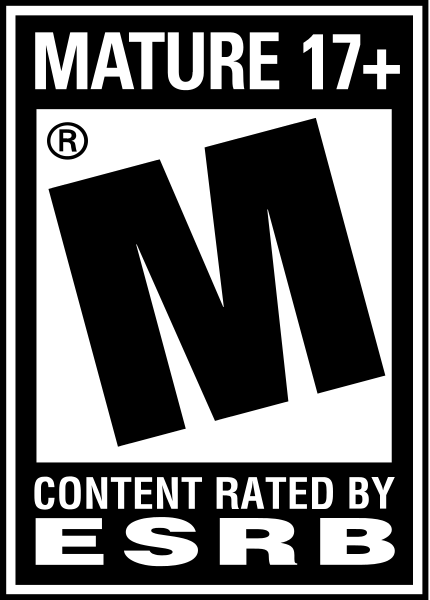Existing User Log In
New User Registration
Register for a free account to gain full access to the VGChartz Network and join our thriving community.





America - Front


America - Back



Ubisoft Montreal
Action
 02/18/10 Ubisoft
02/18/10 Ubisoft  (Add Date)
(Add Date) 02/18/10 Ubisoft
02/18/10 Ubisoft
| Owners: | 11 | |
| Favorite: | 0 | |
| Tracked: | 0 | |
| Wishlist: | 0 | |
| Now Playing: | 0 | |
Bonfire of the Vanities is the second downloadable expansion to Assassin’s Creed II. It picks up the story from where the first expansion (Battle of Forlì) left off, and fills the hole in the story between Ezio’s losing of the Apple of Eden in the first expansion, and Memory Sequence 14 (the final sequence) of Assassin’s Creed II, where Ezio travels to the Vatican for his final quest.
Unlike Battle of Forli, Bonfire of the Vanities takes place in a city all too familiar to those who have played the original: the Republic of Florence, or Firenze, Ezio’s birthplace and former hometown. Once a beacon of knowledge, Firenze has been thrust into darkness by the “mad monk” Girolamo Savonarola and his Bonfire of the Vanities, in which all material possessions and objects of knowledge were burned, in an attempt to return to the time before sin. There’s nothing new to see here; you will have walked the streets before. There is no pleasure of seeing a new city, because anybody who has finished the main campaign will have explored the city to death already. One new district is added, beyond the river Arno, with some new locations, but the missions are spread throughout the city.
Ezio’s objective is, of course, to expose Savonarola for the foul beast he is, retrieve the Apple of Eden, and transform Firenze into a shining light once more. And all of this is surprisingly easy. All that Ezio has to do is assassinate Savonarola’s nine lieutenants, each of whom presides over a certain district of Florence. Bonfire of the Vanities is reminiscent of the original Assassin’s Creed, but without the filler: find target, reach target, stab target, kill target’s guards. For the most part, this isn’t challenging in the slightest: you can waltz in, and even if the target runs away, Ezio can chase after him and thrust a knife into his back. If the entire expansion was like this it would be shallow but enjoyable, short but somewhat memorable.
As it is, Bonfire of the Vanities is memorable for quite a different reason: it isn’t fun. Or rather, some of it is, but somebody at Ubisoft Montreal thought it would be a good idea to put in forced stealth segments. Fair enough, stealth means that you rely on skill and thinking outside of the box, right? Unfortunately, this is not the case. Rather, these segments depend entirely on luck. You can do the exact same thing four times and fail miserably, and then the fifth time, by some strange twist of fate, it will work. One of the missions involves assassinating a farmer, using bales of hay (a favourite hiding spot of Assassins) as cover. If any guard sees you, even for a fraction of a second before a knife enters his heart, you fail the mission. So it was that I tried all sorts of approaches, from different directions. The target managed to conveniently stay as far away from any bale of hay as possible. Then, the tenth time around, he walked right next to the cart of hay which I had attempted to hide in several times and been foiled, and stood next to it for an easy stab. The whole thing reeks of inconsistency: why does the plan that fails time and time again suddenly work because of bizarre luck? This could perhaps be forgiven if it only applied to the one mission, but it applies to three of the nine. One third of the game, dictated by luck.
One wonders why they even put these stealth segments in to being with. They aren’t enjoyable in the slightest. No longer are you the invincible assassin who can fight off dozens of enemies with his bare hands, who can silence a guard before he has the chance to scream. No, you are Snake without his cardboard box; Sam Fisher without his night-vision goggles. Ezio has to be stealthy without any tools which could possibly help him in this endeavor: he can’t even keep his back to a wall. There was no need for this in the main game, because where stealth was needed your course of action was clearly signposted, and stealth was not needed often. Which sounds more enjoyable: sprinting and performing a double assassination before fighting off waves of guards, chasing down your target and sinking a blade into his flesh, or tiptoeing around and hoping you aren’t seen by guards whom you could easily defeat in combat?
The other six missions are bland but reasonably enjoyable. These mostly involve pushing crowds out of your way, and chasing a man until you get close enough to assassinate, at which point they say some variant of “I’m not evil, his Apple had me in its power!” before quietly dying. These six together took about 40 minutes, while the other three took another hour and a half due to nothing more than atrocious design. And there is no flying mission to ease the tension, and not very many view points to synchronise. It’s two hours of the original Assassin’s Creed, minus the information-gathering chores and with some stealth thrown in.
The central gameplay is, for the most part, the same as that of Assassin's Creed II, using the Puppeteer control system. The only addition is the springboard jump, which allows Ezio to bounce off flags which protrude from the rooves of certain buildings. At no point will you need to use this ability; indeed, I only used it once, and it wasn't necessary to do so. The combat is slightly more challenging than the main game, but this still isn't difficult for an Ezio equipped with two hidden blades, the best sword and dagger that money can buy, Altair's armour (if all of the Assassin Tombs have been found) and several gadgets. But, of course, you won't be fighting much, because half of the missions don't require you to kill any guards, and the other half downright forbid it (unless you can kill them without being seen- harder than it might sound).
Bonfire of the Vanities also fails in its primary objective as plot hole-filler, in that it doesn’t fill any plot holes. The reason for Ezio’s travelling to Florence is never made clear, there is an enormous plot jump between the murder of the final lieutenant and the final cutscene, and the DLC shows nothing resembling any planning of an attack on the Vatican. One moment, he is walking with his Uncle, and then the next he is scaling the walls of Roma (Sequence 14).
The graphics are, as usual, stellar, but with none of the new environments of Forli. The music is the same as Assassin’s Creed II, and serves to complement the action quite well. The voice acting of the lieutenants is also fantastic, conveying the fear and remorse that they clearly feel. There are no major glitches of any kind, except for the AI quirks which make the stealth missions possible.
In conclusion, Bonfire of the Vanities doesn’t really need to exist. It doesn’t bridge the gap between Battle of Forli and Sequence 14 in the slightest, it makes no sense from a story perspective, and the majority of the game is spent tiptoeing around guards and hoping for a miracle. It is more expensive than Battle of Forli, despite having no more content and not being any more enjoyable in the slightest. It’s 40 minutes of vague amusement, and then 90 minutes of irritation, with no plot to tie it together, no trophies or achievements, and a comparatively hefty price tag. There’s really no reason to own this DLC, unless you wish to experience Assassin’s Creed: Stealth Gone Wrong. Where Battle of Forli was an enjoyable but short and slightly repetitive hour or so of gameplay, with new environments, Bonfire of the Vanities is annoying, slightly longer, and a lot more repetitive. It’s essentially everything an expansion should not be.









